
Полная версия:
Jump into Excel. Training Course from Beginner to Intermediate in two hours

Jump into Excel. Training Course from Beginner to Intermediate in two hours
Aleksey Skorodumov
Translator Maria Skorodumova
© Aleksey Skorodumov, 2024
ISBN 978-5-0062-5396-4
Created with Ridero smart publishing system
Briefly about this course and me.
This Training Course is designed for two hours. Information about my video course «Jump into Excel. From Beginner to Intermediate in two hours», test tasks and files with examples of the use of basic Excel functions can be found on my website (find them at the end of the book).
Knowledge from the Course will be enough to perform all tasks within the work functionality for most employees. The course is a step-by-step instruction from scratch. Accompanied by screenshots with explanations. From scattered and incomplete source information, we gradually create and prepare for printing a final table with the processed data. In the course of the action, we get acquainted with Excel and focus on the most frequently used features of the program for data processing and visual presentation of results, learn to work with the main functions.
The course will be useful to anyone who wants to learn how to work with this magical program. Excel allows you to find and extract numbers and text from separate source files, make almost any calculations, and transform the source data according to your request. In Excel, you can save the final result in any form: from plain text and tables to pivot tables and graphs. In contrast to complex and expensive special programs, the settings of which can only be worked with by experienced programmers, Excel is intuitive, easy to edit, and accessible to everyone. Therefore, Excel is widespread and its knowledge at an intermediate level is mandatory for applicants for high-paying positions in almost all areas of business.
I have met students who, after completing many hours of Excel courses, experienced difficulties in elementary functionality. Many have tried unsuccessfully to read and memorize multi-page detailed books on the vast possibilities of Excel, and now after that they believe that learning Excel too complicated and too time-consuming. I dare to give you a piece of advice: don’t be afraid to start studying, you can learn the essentials in two hours. And if you suddenly have a specific task that requires additional knowledge, you can easily and quickly find it by searching on the Internet or using the help inside the program. Do not waste your time on many hours of courses and loading your brain with unique knowledge that is not necessary in practice. Bravely jump into Excel and start solving specific practical problems of your business faster with its help, rather than out-of-touch tasks for knowledge of rarely used Excel functions. And only when you find out that your knowledge is not enough for your work, only then delve into the specific issue that you want to understand better.
Why spend money on this course when you can learn everything on the Internet?
Yes, you can learn on your own, but it will take more time. And the cost of this time spent by you will be many times more than the cost of this course. By purchasing this course, you end up saving money. In addition, there are many features in Excel that are rarely used in practice. If you study everything, there is a risk of missing the main thing, overloading the brain with the secondary.
Who are you and why should I choose your course?
My name is Skorodumov Aleksey, I live and work in St. Petersburg, I have a PhD in economics. For many years I have been working with Excel continuously, having completed hundreds of orders for both large and small companies from various business areas with its help. My Course is good because it allows you to learn in a short time the most important things in Excel, which are really used in practice.
You can contact me for possible cooperation through my website or by mail (find them at the end of the book).
Creating an Excel file from scratch
Let’s begin.
Imagine that a beginner who is completely unfamiliar with Excel is assigned a task: to prepare an Excel file with information about company’s employees.
At the same time, you need to use data both from the HR department and the secretary, and then save them on different sheets.
The final file should be a report table for printing with the following columns: Department, Position, Surname, First Name, Patronymic, Date of employment, Date of birth, Experience of full years on the date of the report, Age of full years on the date of the report. The table should be sorted by the employee’s surname.

So, let’s figure out step by step how to complete this Task.
To begin with, let’s choose a place or «Folder» on the computer where the Excel file we created will be stored, and also choose a name for them. For example, let’s create a «Task» folder on the Desktop, and in it we will create an Excel file with the name «Employees».
Note for beginners: if the desktop on the computer is not visible at the moment of work, for example, due to the fact that the screen is completely occupied by an open application, we will first open access to the desktop, and «minimize» all open windows of other applications. If we do not see the «Minimize all windows» button (its display depends on the computer settings) then hover the mouse cursor over the lowest part of the screen, a strip called the «Taskbar». Then right-click, and in the menu window that appears, left-click on «Show the desktop».
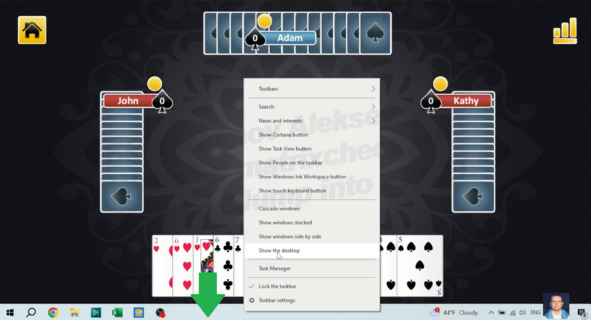
Hover the mouse cursor over the Taskbar, right-click, and in the menu window that appears, left-click on «Show the desktop».
All other windows with open applications will minimize and the Desktop will open to us.
So, let’s create a new folder.
Hover the mouse cursor over any free space on the Desktop and click the right mouse button. In the menu window that appears, hover the mouse cursor over «New», then hover over the «Folder» and click on the left mouse button.
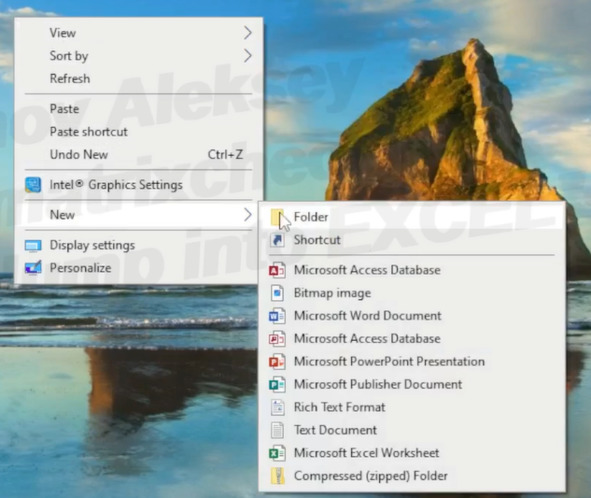
Hover the mouse cursor over «New», then hover over the «Folder»
A folder with the highlighted name «New folder» appeared.

«New folder» appeared
At the moment of selecting the text in the folder, we change its current name «New folder» to our name «Task» by typing the text from the keyboard and pressing the «Enter» key.

Change its current name «New folder» to our name «Task»
If we later want to rename the «Task» folder to any other name, hover the mouse cursor over this folder and click the right mouse button, select «Rename»
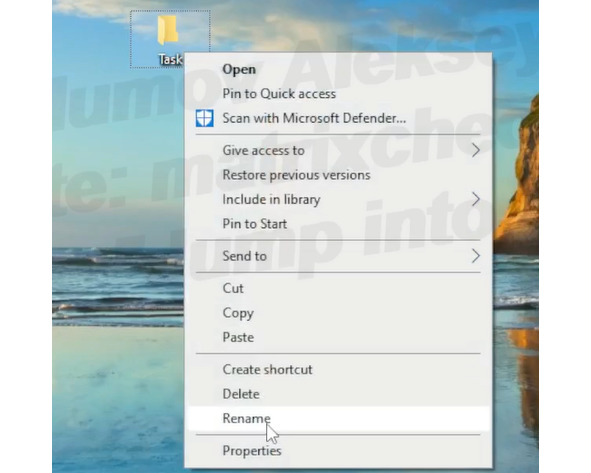
Click the right mouse button, select «Rename»,
and type in the name we want,

and type in the name we want,
for example, «Folder». Then you can press «Enter».

Then you can press «Enter».
Return the name «Task» to the folder.
Now, open the created folder «Task».
To do this, hover the mouse cursor over the «Task» folder and click the right mouse button. In the menu window that appears, hover the cursor over «Open» and click on the left mouse button.
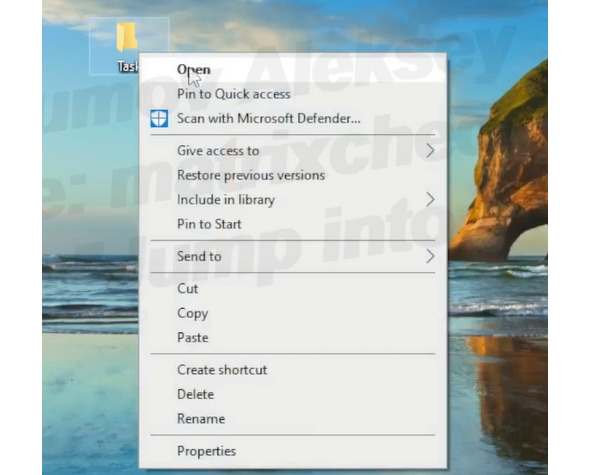
Hover the cursor over «Open»
An empty folder opens. Let’s create a Microsoft Excel file in it.
To do this, hover the mouse cursor over any free space in the open folder «Task» and click the right mouse button. In the menu window, select «New», and in the next menu window that opens, select «Microsoft Excel Worksheet».
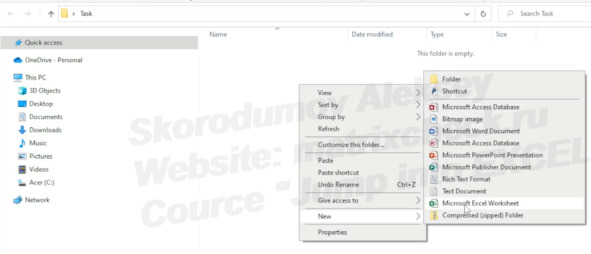
select «Microsoft Excel Worksheet»
The file «Microsoft Excel Worksheet» appeared. We can straightaway rename it to our name «Employees». So, type in «Employees» from the keyboard, and press the «Enter» key on the keyboard.

rename it to our name «Employees»
In the same folder, we will copy the files with the initial information received from the HR department and from the secretary.
Let’s say these files were transferred to us on a flash drive or saved in a shared folder.
To copy files to the «Task» folder, first open a flash drive or a shared folder. In our case, this is a Transcend flash drive. In the folder that opens, right-click on the desired file and select «Copy».
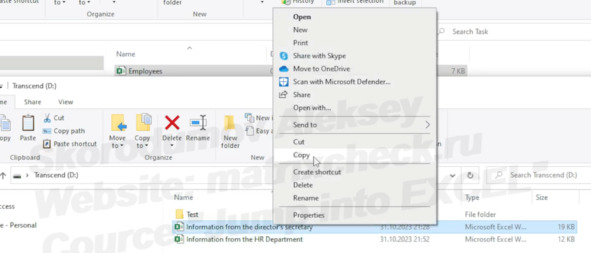
right-click on the desired file and select «Copy»
Then go to our «Task» folder, right-click and select «Paste».
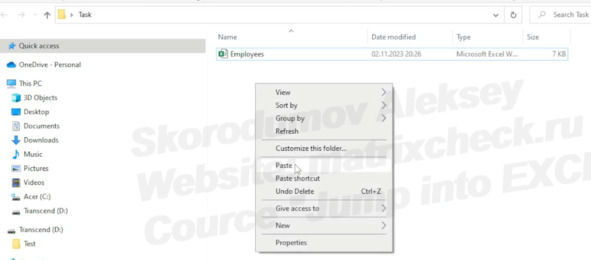
right-click and select «Paste»
Now we can see the file appeared. We will do the same with the second file. First copy and then paste it. Now all three files are in our «Task» folder: two with the initial information, and the third file created by us, «Employees», in which we will prepare the Results.

all three files are in our «Task» folder
Now let’s start filling out the created «Employees» file with information.
We can open the file «Employees» as we opened the folder: hover the mouse cursor, click the right mouse button and select «Open» from the menu. Or we can do it in another way: hover the mouse cursor over the file and double-click with the left mouse button. The file opens.
Introduction to the Interface
The Excel file will open as a blank sheet looking like this. The specific view depends on the computer settings and the version of Excel.
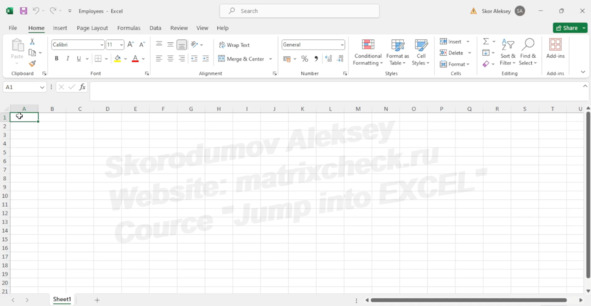
blank sheet looking like this
Let’s get acquainted with what we see.
Control buttons for the main program window
They are located in the upper right area of the Excel window. They allow you to close a file, Minimize it, minimize it into a window, expand the window to full screen.
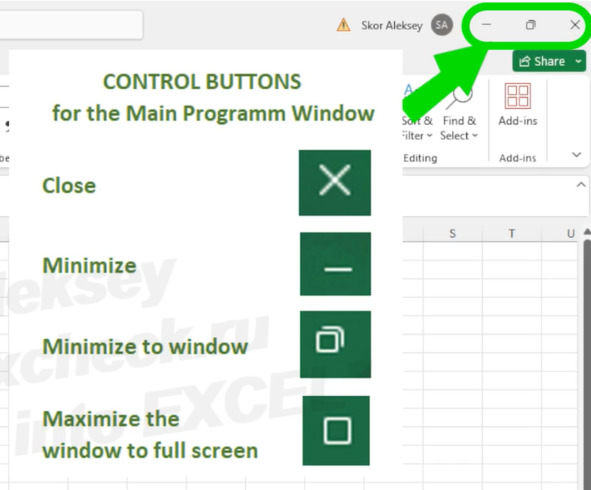
Control buttons for the Main Program Window
The Quick Access Toolbar is located in the upper left area of the Excel window.
If we often use the same commands, we can bring the command buttons here and run commands from here. For example, the «Save changes» command is often used. If you do not click it, then everything you have done in the file after opening it will disappear after closing the file. The «Undo last action» command is also often used. For example, if you accidentally deleted a column with the necessary information, clicking on this command will return you to the state that was before the deletion.
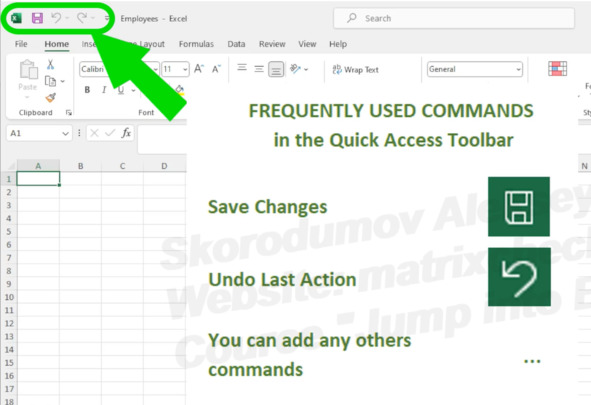
Quick Access Toolbar – for frequently used commands
If desired, we can add any other commands to the Quick Access Toolbar by clicking on the edit button of the Quick Access Toolbar. Select «More Commands»
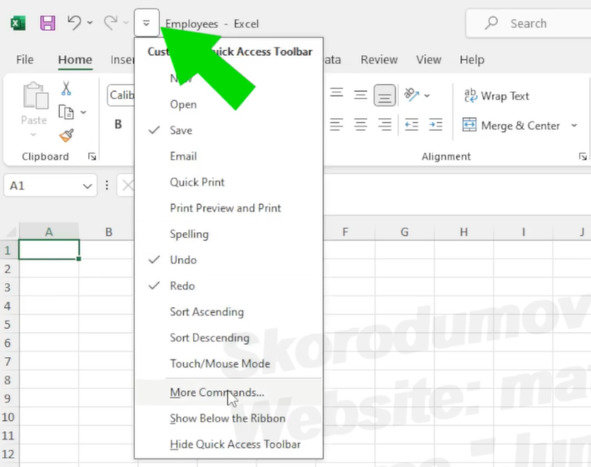
Select «More Commands»
and add the necessary ones.
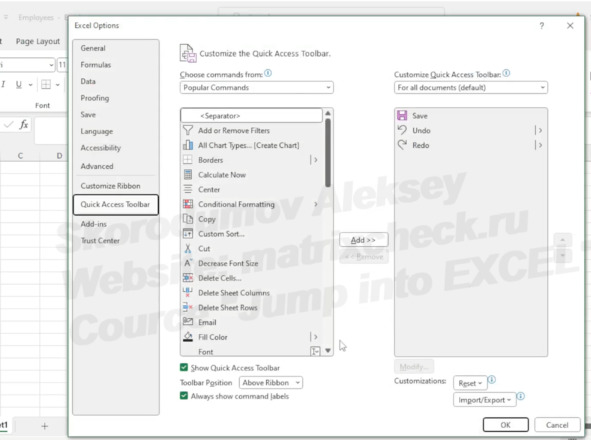
add the necessary commands
Tabs.
Under the quick access toolbar there is a ribbon with available tabs: Home, Insert, Page Layout, Formulas, Data, Review, View. As you can see, each tab has its own set of commands.

each tab has its own set of commands
This set of commands can be edited if desired – you can add or remove commands. I do not recommend beginners to engage in such editing – everything you need is already configured by default. But if we really need to add our own commands, then it’s easy to do: hover the mouse cursor over any point of the tabs, click the right mouse button, select «Customize the Ribbon» and get to the tab editing menu, where we can not only add any command to any tab, but also create our own tab.
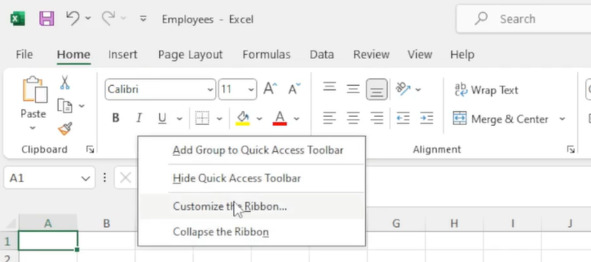
select «Customize the Ribbon»
For example, select «New Tab»,
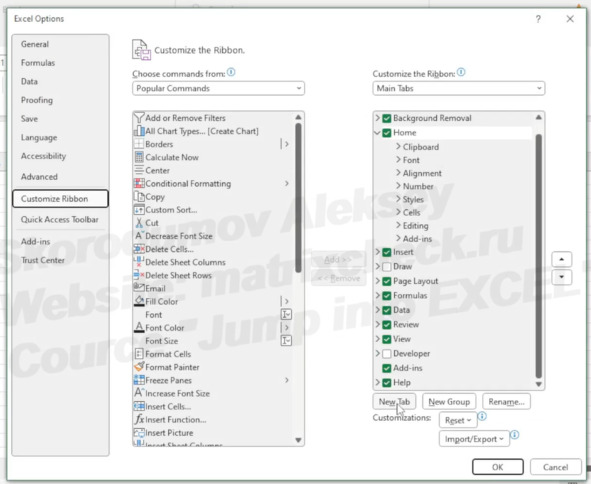
select «New Tab»
name it «Aleksey» (it’s my name),
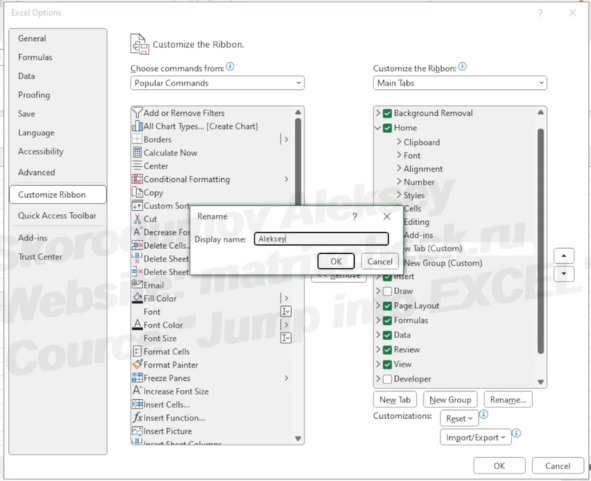
name it «Aleksey»
and we can add any commands to this tab. Click «OK».
Now, we have a new tab with the name «Aleksey».
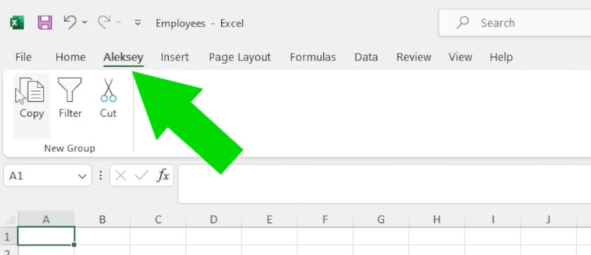
a new tab with the name «Aleksey»
Since we don’t actually need this tab, we Remove it.
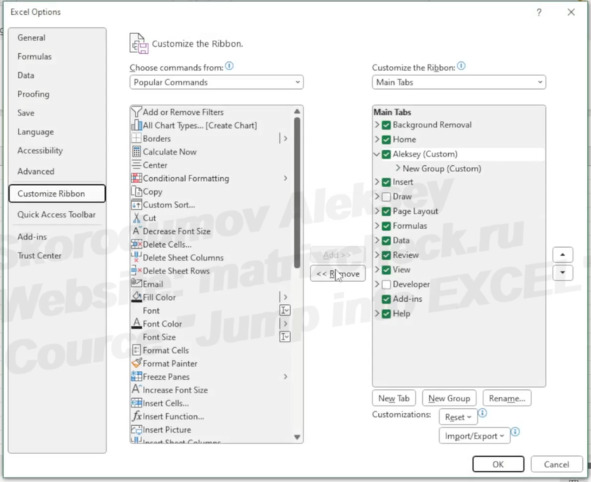
Remove tab «Aleksey»
And it disappeared.
Tab commands are located under the ribbon with the tabs. When opening a file, we see the commands of the «Home» tab, since the «Home» tab opens by default. If we move to another tab, for example, the «Formulas», then we will see the commands of this other tab.
To access individual cells inside a spreadsheet, the Cell names are used. The Cell name is a combination of its column (denoted by the Latin letter A, B, C, D …) and its row number (1, 2, 3, 4, 5 …). In total, there are more than 16,000 columns and more than a million rows in the Excel file on one sheet, that is, more than 16 billion cells on each sheet.
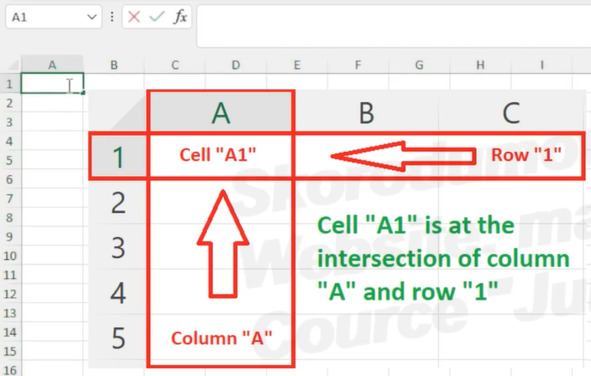
Cell «A1»
Object name field.
By default, there we see the name of the active cell in which the table cursor is located therefore, the active cell is often called «Highlighted». We can select any object: a cell, a group of cells, a table, a graph and assign (by typing) any name in this field of the object name, for example «Table1», in order to further refer to the named object by its specific name.
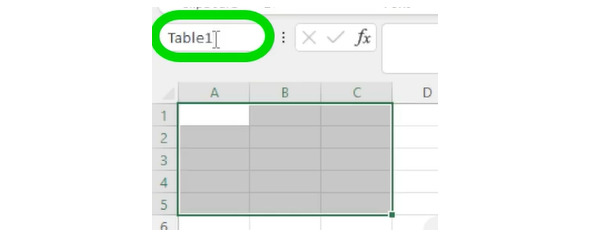
object name «Table1»
In practice, this feature is often used when working with a lot of arrays and in long formulas to shorten them. In other cases, it is not recommended to specify the names of objects without a necessity.
The Function Wizard button is used for quick search and insertion into the active cell of any of the built-in Excel functions. We will get acquainted with the basic built-in Excel functions later.
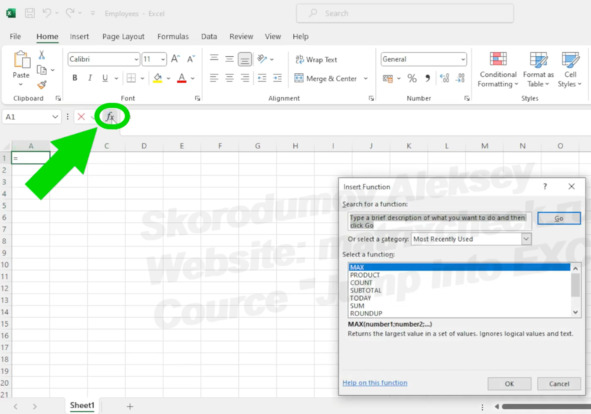
Function Wizard
The Formula bar shows the contents of the Active Cell. If the active cell contains a constant, then both in the cell and in the formula bar we will see this constant, for example «2». But if the active cell contains a formula, for example "=2+2», then in the formula bar we will see the formula itself, and in the cell, we will see the result of the formula – «4». The text of the formula contained in the cell can be edited.

Formula bar
The labels with the Names of the sheets are at the very bottom of the window. Sheets can be renamed, added, deleted, renamed again.

Names of the sheets
There can be hundreds of sheets in a single Excel file. But in practice, they are usually limited to 10, maximum 20 sheets. The thing is that when there are a lot of sheets, it becomes inconvenient to search for information.
Scrollbars allow you to see adjacent areas of the sheet that are not currently visible. The row scroll bar is on the right, and the column scroll bar is at the bottom of the sheet. We hover the mouse cursor over the viewing direction, click the left mouse button and do not let go until we find ourselves in the place that we are interested in seeing. If we scroll through several rows or columns, we stop seeing the active cell, but at the same time, we will still see which cell is active in the object name field.
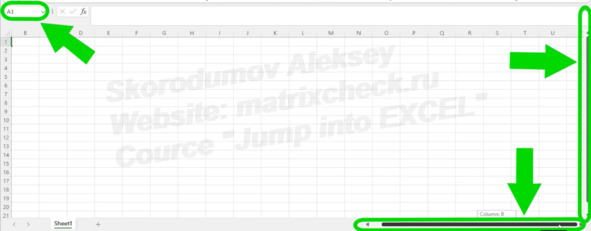
we will still see cell «A1» in the object name field
Please note: the active cell itself does not shift at the same time. It’s still A1.
To make another cell active, use the mouse or keyboard arrows instead of scroll bars. To select another cell with the mouse, just hover the mouse cursor over another cell, for example D1, and click the left mouse button.
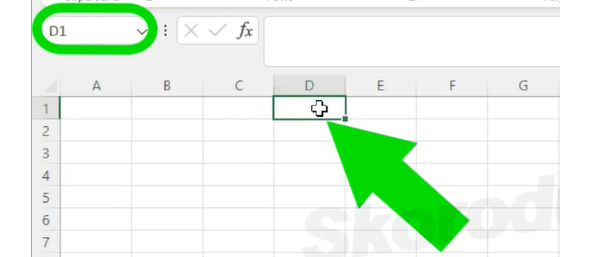
To select cell «D1», just hover the mouse cursor and left-click
You can also move the active cell using the arrows on the keyboard, which are located in the lower right corner of the keyboard.
Filling in the file with the initial information
Now let’s go back to our task and start filling in the file with the initial information.
Let’s open the first of the sent files «Information from the director’s secretary».
As you can see, there is not complete information on the task: there is no Date of birth, no Date of employment, no Experience years and Age. But at the same time, there is information that was not required by the assignment: a Work phone and an E-mail.
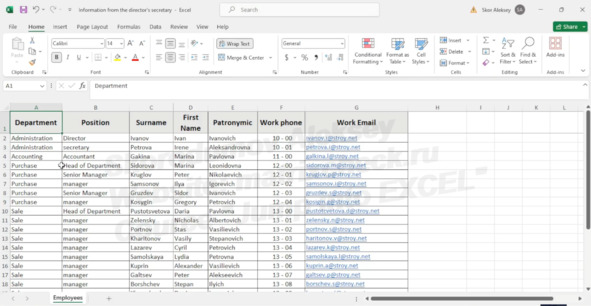
file «Information from the director’s secretary»
We will copy all this information into our «Employees» file on a separate sheet, which we will call «Information from secretary».
In order to rename «Sheet1» to the name «Information from secretary», hover the mouse cursor over «Sheet1», press the right mouse button, select «Rename» and type in «Information from secretary», then press the «Enter» key.
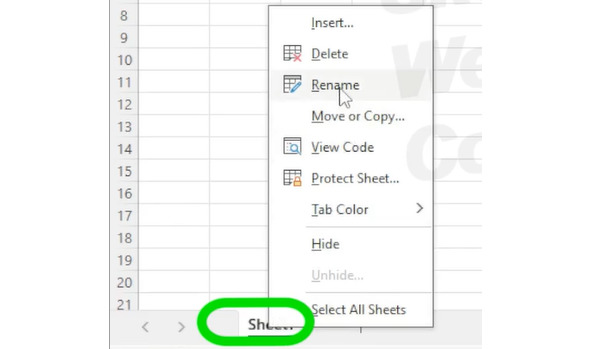
select «Rename»
and type in «Information from secretary», then press the «Enter» key.
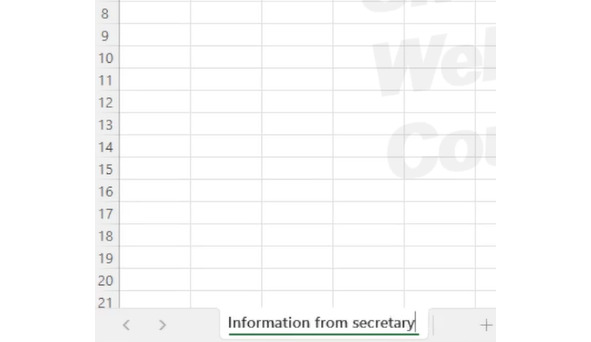
type in «Information from secretary»
Copy operation
Before copying, it is necessary to highlight the cell that we are going to copy. «Highlight» means to stand on a cell with a tabular cursor. This can be done using the arrows located on the keyboard in the lower right corner.
You can also select a cell using the mouse cursor. Hover the mouse cursor, for example, on the cell «G26» and click the left mouse button. To highlight the entire copied range, we stand on its corner cell, for example «G26». Click on the left mouse button and, without releasing this button, drag the cursor to the opposite corner. And only after bringing it to the end – we release the left mouse button pressed.
Thus, the entire block of cells is highlighted.
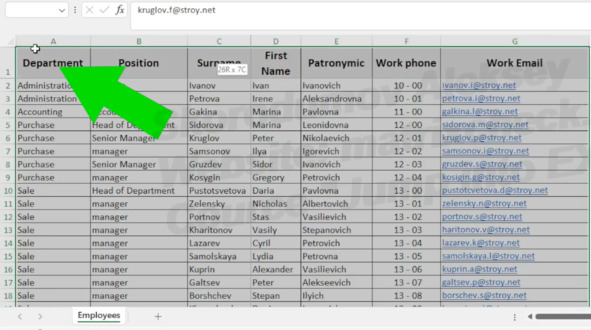
the entire block of cells is highlighted
Let’s repeat it again. We stand on the cell «A1», press the left mouse button and drag the cursor now to the lower opposite corner. When dragged – release the left mouse button.
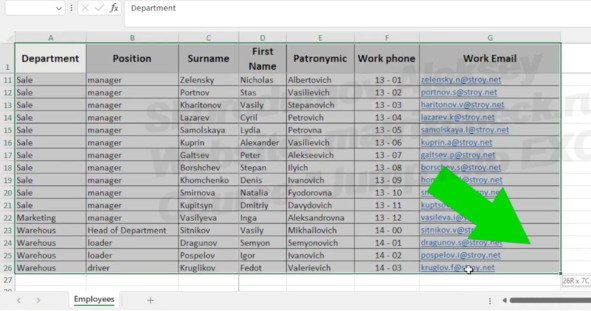
and drag the cursor now to the lower opposite corner
There is another way to select the desired cells. We can select for copying. Not only the range A1:G26, which is a part of the columns A:G, that is, but all the cells of the columns A:G at once. To do this, hover the cursor over the name of column «A», above cell A1, click on the left mouse button and, without releasing it, drag the mouse cursor to the right until column G is highlighted. Release the pressed left mouse button.
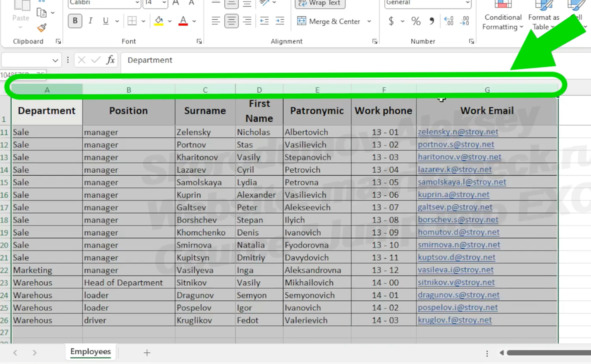
all the cells of the columns A:G at once
After the range for copying is selected, click on the «Copy» button located on the «Home» tab.
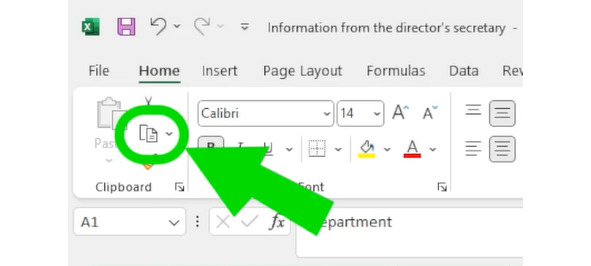
click on the «Copy» button located on the «Home» tab
Instead of using the «Copy» button, we can hover the mouse cursor over the selected range, right-click and select «Copy».
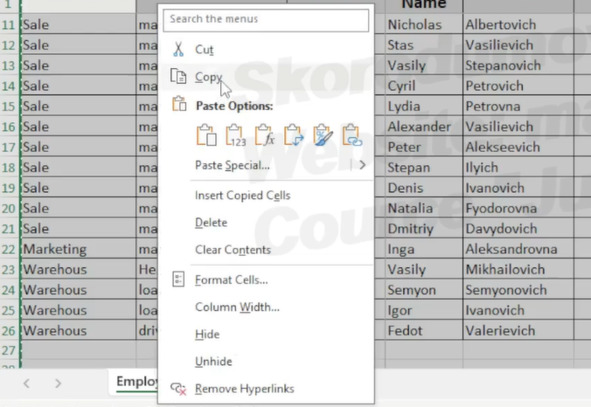
right-click and select «Copy»
For copying, the «Ctrl» and «C» keys located on the keyboard are also often used. First, press the «Ctrl» and, without releasing it, press the «C» key with the second finger.
Regardless of the chosen copying method, the result will be the same: a copy of the selected fragment gets to the Clipboard and is ready for insertion in any other place, both in this file and in any other file. Around the copied fragment, a temporary dynamic dotted line appears, indicating copies of which cells are currently in the Clipboard.
Paste operation
We stand with the tabular cursor on the cell in which we are going to insert the data on our «Information from secretary» sheet.
Since we are going to insert not one cell, but a whole array of data, we must stand on the upper left cell of this array (in this case it is cell «A1»), below which and to the right of which the entire array will be inserted.
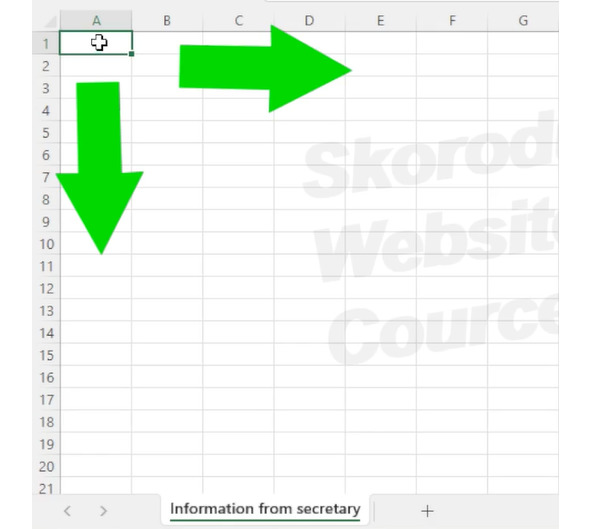
we must stand on the upper left cell «A1», below which and to the right of which the entire array will be inserted
Click on the «Paste» button located on the «Home» tab.
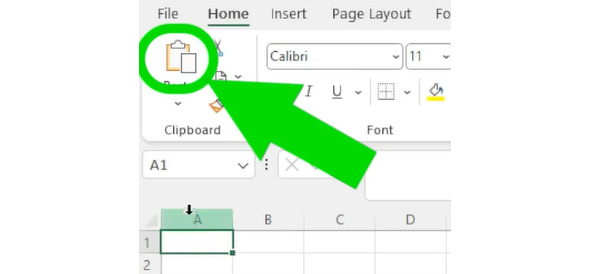
Click on the «Paste» button



